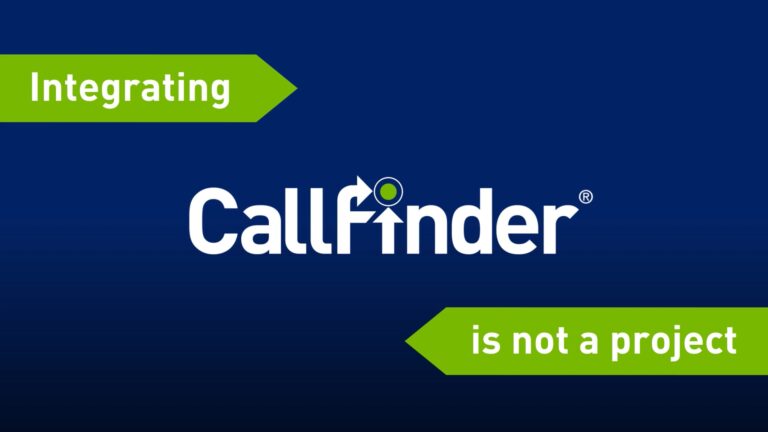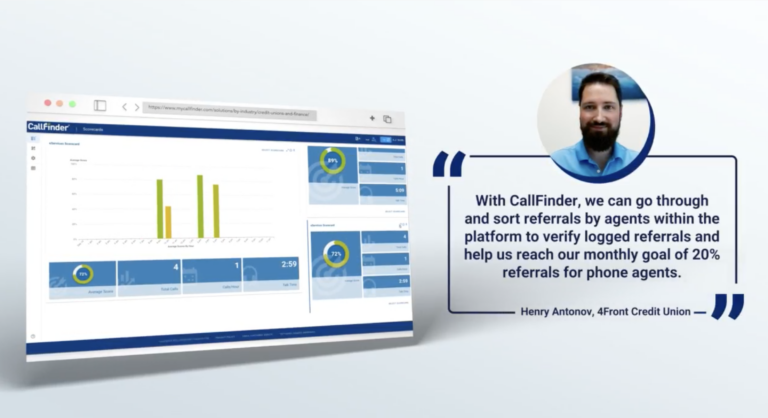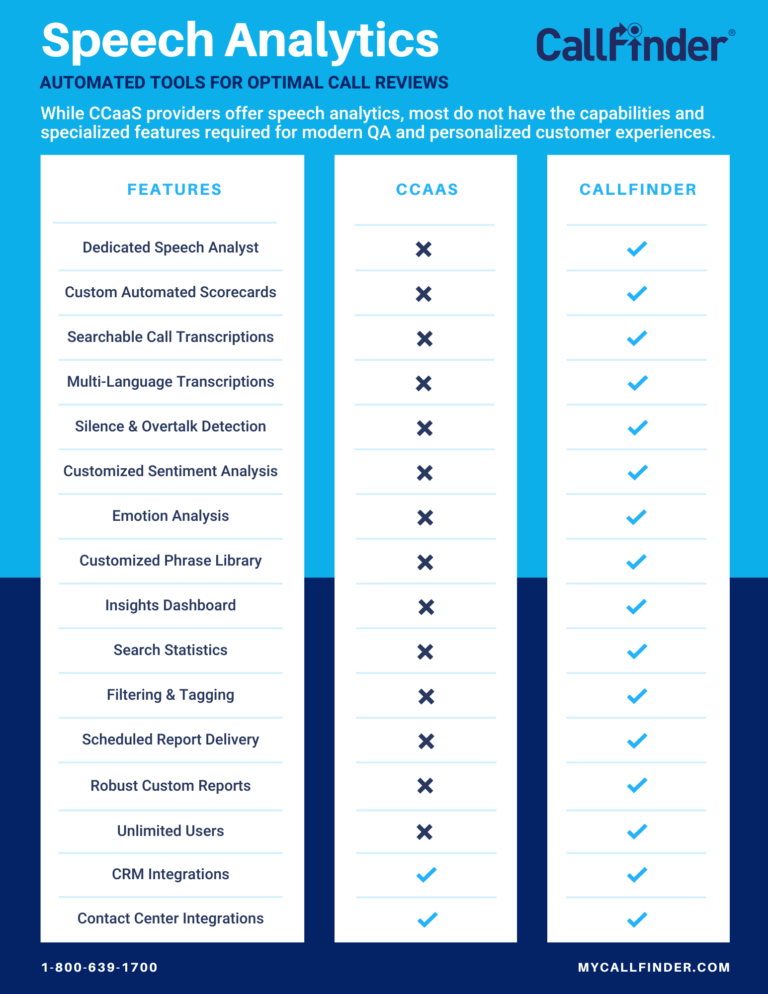As a QA specialist, you’re always looking for ways to improve your call center. You could sample a few calls between agents and customers and listen to the recordings yourself. But what if you want to analyze them all at once using special software? What if you want to know, at a glance, how the call went and how your agent performed? What if you want to gauge the performance of your entire team? That’s what a call center quality monitoring solution will do.
What is call center quality monitoring?
Call center quality monitoring is a form of quality assurance. Its purpose is to ensure that your customer service agents are working as effectively and efficiently as possible. In short, it’s to make sure your CX is optimized during phone calls.
Quality monitoring as a form of quality control is important because without it you cannot provide a quality standard for customer service calls. A QA monitoring program gives you a far more effective method for ensuring QA than simply reviewing a few recordings of call center agent interactions. It allows you to monitor all calls automatically, with features that make quality management exceptionally effective. It also saves you the time it takes to listen to individual recordings.
How Does it improve the customer experience?
Quality monitoring aims to improve the customer experience (CX) by solving a range of issues that can pop up in your call centers. First, it can help you identify problems in the call center by highlighting certain characteristics of each call. One way to do this is to measure the amount of silence in a call.
For instance, let’s say the average amount of silence on your calls is 20%, and you find an outlier in your data that says one of your agents has 90% silence on their calls. You could then investigate this by reviewing the recordings and transcripts of the calls. It might be an example of one of your agents gaming the system, possibly by having a voicemail message that introduces who they are and then followed by a very long period of silence.
A quality monitoring solution eliminates random sampling and gathering insights through sheer luck. But instead, managers can get this info as part of the data provided by the service.
Get a pulse on how customers truly feel
A call quality monitoring service can also improve the quality of customer feedback, notably by removing the need for anecdotal evidence. If you merely ask a customer to take a survey after a call, you may get some information, but you won’t know why they gave that feedback. Automated quality monitoring solutions allow you to get many different aspects of a call at a glance, whether it’s emotion, sentiment, or tone.
You can look at these attributes in addition to the standard transcription, which is of course always available for you to review. It’s worth noting that the transcript you want to see can be searched for keywords and phrases to quickly find a specific segment of the call.
Helping you set specific goals is another important feature of quality monitoring solutions. These solutions measure calls on a variety of metrics and analyzes them in depth. So then you can see on a scorecard the outcome of all calls — either individually or collectively.
For example, if the call has a negative tone, the quality monitoring solution can find that call and tell you when it happened. If this is a pattern across many agents, you can then adjust your training and feedback to cover this aspect of call handling. If negative tones are common in your call center, you can then set the goal to change this into a positive tone.
Automated Call Scoring
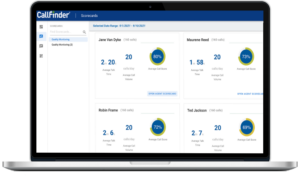
Quality monitoring software also provides automated scoring so you can get a big-picture view of how your agents perform on each and every call. If the call scores are consistently low, you’ll be able to see why at a glance.
You’ll not only want to regularly provide feedback to your agents, but you’ll also want to provide quality feedback based on data analytics. A call quality monitoring solution is invaluable for analyzing your agents’ calls and scanning them to determine whether the call was positive or negative. The solution also automatically provides a full transcript of the call. This allows you to create specific feedback for agents, maximizing the effect of your coaching to improve their performance.
Quality monitoring software allows you to take raw speech and turn it into text. This makes searching through calls vastly easier than merely listening to them, which would typically involve rewinding and fast-forwarding just to find a specific segment. Instead, with a speech-to-text feature, you can search by keyword or phrase or just skim through calls and review them at your leisure. No need to listen for hours to hear the same parts over and over again.
Another advantage of a quality monitoring solution is that it can help your QA specialist create specific KPIs. Without strong KPIs, you can’t measure your agent’s performance in terms of a customer’s positive emotional response. This in turn might hinder your ability to comprehend the customer experience appropriately.
How do you know if calls are quality?
QA managers need to know exactly what to look out for during the QA process to maximize agent performance. This ensures a high call quality. There are some specific features you can look for to determine the quality of a call.
Consider the sentiment and emotion of your calls. Sentiment and emotion refer to the spoken words combined with the tone of the call. Even if the words themselves are scored as positive, is the agent’s tone appropriate? Does it sound as if they’re compassionate to a customer’s concerns? This can make the difference between a positive or negative impression of your brand.
These qualities tie into emotional intelligence, which is the ability to demonstrate empathy during a call. Do agents effectively communicate to the customer that they genuinely care about helping them with their concerns? If the customer feels that the agent is merely going through the motions, it can lead to a negative emotional response.
Communication & Active Listening Skills
Your agents should be well versed in active listening for effective communication. Your customers are contacting your call center because they want to be heard and understood. If the customer gets the sense that the customer service agent isn’t listening or isn’t trying to understand their issue, this is a recipe for a negative interaction.
Asking the right questions is connected to active listening. Your agent’s questions should be laser-focused on better understanding the customer’s concerns without any tangents or unnecessary questions.
During a call, you’ll want your agents to minimize periods of silence and overtalk. Overtalk refers to when both the agent and customer are speaking over each other. Your agents should be careful not to allow too much silence into the conversation and to never speak when the customer is speaking. Automated call monitoring software can detect when agents are outside the range of usual silence or overtalk, depending on the average of all your calls with all your agents.
Understanding Call Quality metrics
A call is of high quality if agent interactions reach the bar of fulfilling these aspects. The customer experience is dependent on the quality of customer support. Broadly speaking, a customer service interaction can be positive, neutral, or negative.
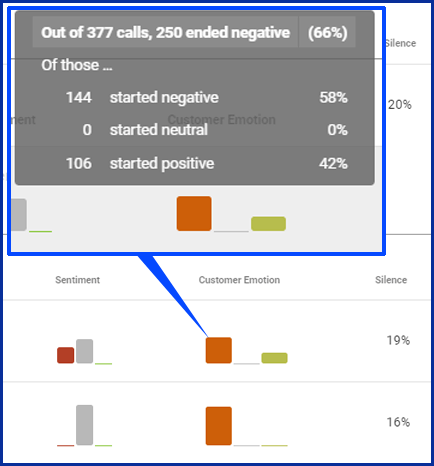
If your solution detects negative interactions, you can use its speech-to-text call transcripts to see why. You can then identify problematic interactions much more quickly than you could just by hoping to find this information through random screening, as is done in a traditional QA setup. In addition, a quality monitoring solution can identify specific segments in which there was a tone shift in the call. For example, the call could have started with a positive tone but ended with a negative one. A quality monitoring solution can identify when a call becomes positive or negative with precision.
Finally, a mark of a high-quality call is whether your agent stuck to the script they were given. Script compliance is vital for heavily regulated industries due to the risk of lawsuits, fines, or other troublesome outcomes if a mistake is made. Your agent should read from the script provided to avoid any issues. If they don’t, your solution will demonstrate that.
Two approaches to quality assurance
There are effectively two ways to approach quality assurance as a QA specialist. These are a traditional QA program and an automated quality monitoring program. Which type you use may influence how your company approaches agent training and measures customer satisfaction.
A traditional QA program involves listening to phone calls and providing feedback based on those interactions. Monitored calls are usually analyzed at random and produce a few actionable insights into how the customer felt about the interaction. It’s like searching for a needle in a haystack, which doesn’t give you an accurate picture of contact center operations. This approach does little to help you understand the customer experience.
An automated quality monitoring solution takes your QA several steps further. It determines why customers call and how they’re feeling throughout the interaction. This seeks to identify the root cause of their frustration or satisfaction.
How Does Call Quality Affect Customer Lifetime Value?
Call quality has a direct impact on customer experience, which in turn affects a customer’s potential lifetime value. The idea behind this is simple: The happier your customers are with call quality, the more likely they are to continue engaging with your brand. By keeping your customers happy and providing them with a positive emotional connection to your brand, they’ll stay loyal customers for longer and provide more value to the business.
Customer interactions of any kind need to be positive and empathic to create a loyal customer relationship. The impact of a positive emotional connection is illustrated by the fact that emotionally connected customers spend up to three times more annually and have up to a 306% higher lifetime value. They are also far more likely to recommend the brand to others.
Quality monitoring best practices
There are a few best practices and strategies that businesses can use to improve customer interactions and strengthen the quality standard.
Set quality standards. If you don’t have a quality standard, how can you be sure your agents are meeting it? Laying out and defining expectations will help your agents better understand what they should be aiming for during customer interactions. This is tied to identifying the metrics that are most important to your call center. Without these metrics, your agents won’t know how to self-monitor their performance.
Leverage the technology you have in your favor. This refers specifically to speech analytics. A quality monitoring solution provides a host of tools that offer comprehensive speech analytics to help you make decisions.
All of these aspects require a definition of the ideal customer interaction and striving to meet it through an effective QA process. Agent performance is measured through a QA scorecard, which is created by analyzing customer support interactions with the monitoring software.
Improving quality assurance with speech analytics
Speech analytics refers to using automated software to listen to customer calls and scan them for certain features. This creates a QA scorecard that summarizes the customer experience. This analysis improves quality assurance by providing the QA specialist with valuable insights into how your agents perform on both an overall and a call-by-call basis. The data that’s gathered through these analytics gives you a better picture of agent performance.
A quality speech analytics solution can help improve call center performance and quality management. Most importantly, a quality monitoring service allows you go to from a purely reactive position to one that’s also proactive. In other words, while a traditional QA program requires you to search on your own for whether calls are meeting your quality standards, an advanced monitoring program looks at all the calls for you and automatically points out problems it detects in those calls.
Sentiment and emotion analysis is just one aspect of speech analytics, but they’re invaluable to understanding the content and quality of calls beyond what is stated in the transcript. Even if everything is said correctly, if your agent seems bored, frustrated, or otherwise doesn’t offer a positive emotional reaction to the customer, the automated call monitoring software can inform you of this.
All of these features work together to help you:
- Monitor call quality
- Get to the bottom of CX
- Improve agent performance
- Ensure script compliance
Getting Started with a Call Quality Monitoring Solution
An automated call quality monitoring solution provides numerous perks and advantages over traditional QA solutions. The tools provided by an automated solution can be the difference between an effective call center and an ineffective one. This can determine whether your customers have a positive or negative emotional reaction to your brand.
To learn more, download our eBook, “Sentiment & Tone: Measuring Empathy with Speech Analytics.” Or schedule a demo of CallFinder!

